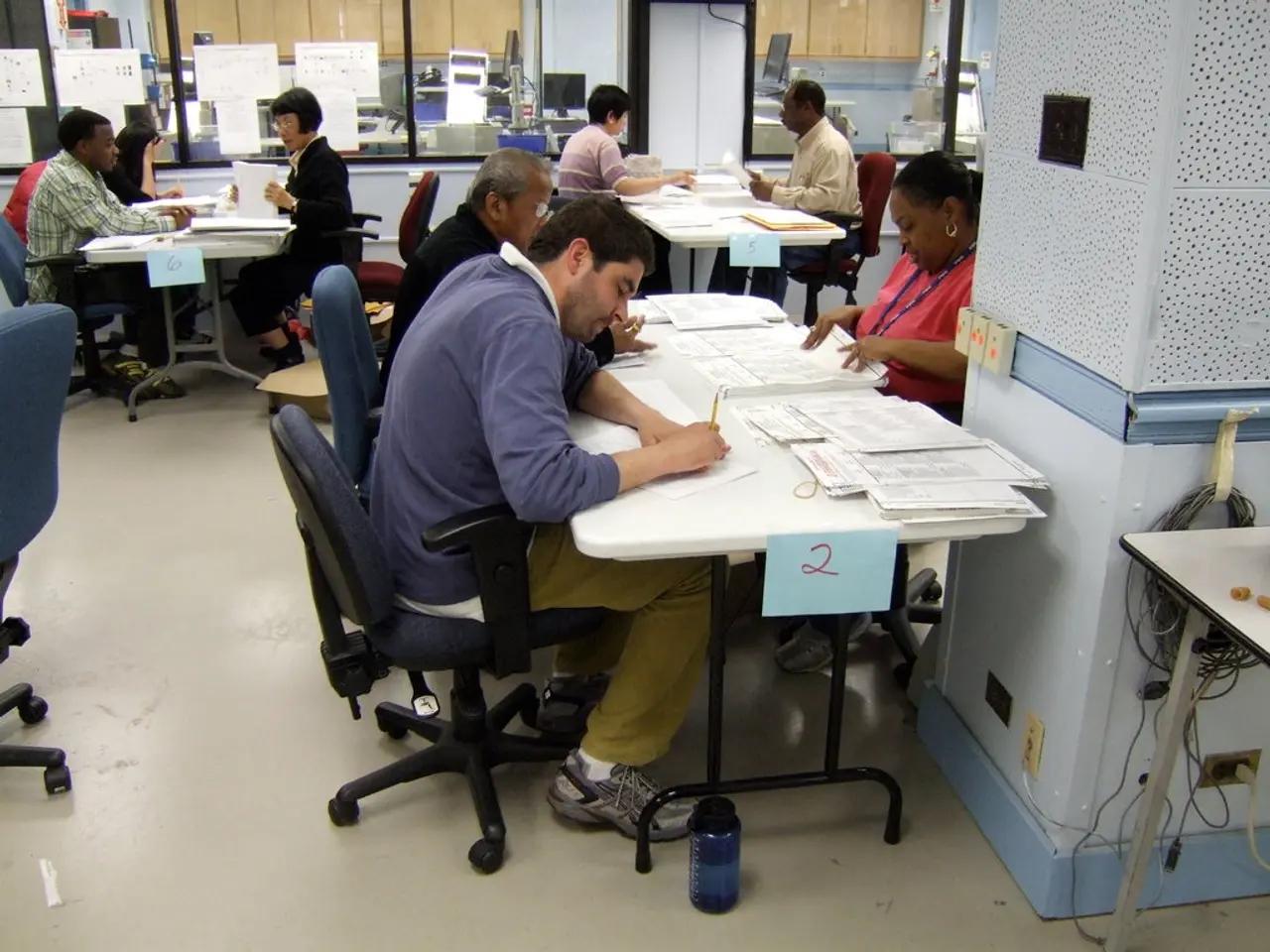Enhancing Mental Health through Workspace Design: The Impact of Ergonomics on Productivity
Transforming Workplaces for Mental and Physical Well-being
In today's fast-paced business environment, the importance of ergonomic improvements in the workplace is becoming increasingly evident. These changes are not just about enhancing comfort, but they are essential for boosting business success.
Ergonomic improvements, such as sit-stand desks and anti-fatigue mats, are no longer optional extras; they are becoming essential components of a modern office. Investing in these smart tools can lead to significant benefits, including reduced stress-related absenteeism, enhanced morale, and increased talent attraction towards healthier work environments.
The psychological benefits of these ergonomic interventions are substantial. For instance, sit-stand desks promote movement and reduce discomfort from prolonged sitting, leading to improved mental health outcomes, reduced physical and cognitive strain, greater employee satisfaction, enhanced focus, and increased engagement.
Anti-fatigue mats alleviate leg and foot discomfort when standing for long periods, thereby reducing physical strain and fatigue. By minimizing discomfort, these mats decrease the mental distraction caused by pain and fatigue, supporting sustained focus and cognitive performance.
Sensory design for mental clarity, through thoughtful use of elements like lighting, colors, patterns, and acoustics, can create emotionally safe and calming environments. This reduces tension and distraction, fosters a sense of psychological safety, and enhances mental clarity and cognitive efficiency.
These ergonomic features work together to reduce chronic physical discomfort and associated stress, increase psychological safety and emotional well-being, lower cognitive load and improve focus, and demonstrate organizational care for employee well-being.
In Brisbane's education sector, employers have redesigned staff lounges and admin offices with anti-fatigue flooring and collaborative desk pods, leading to measurable improvements in job satisfaction. Similarly, a Sydney fintech startup integrated a fully ergonomic layout and within 6 months saw a 30% drop in sick leave and improved scores in team wellbeing surveys. Melbourne law firms have reported reduced burnout and increased billable hours after incorporating sit-stand desks and ergonomic zoning.
In conclusion, ergonomic workplace designs that incorporate sit-stand desks, anti-fatigue mats, and sensory elements not only prevent physical ailments but also enhance psychological well-being, mental clarity, and workplace engagement. By focusing on high-impact zones, offering flexible options, using psychology in layout, and educating and empowering employees, business owners and managers can create a neurodiverse and psychologically attuned work culture that thrives in the future of work.
As we move towards a more digital future, it's crucial to remember that the psychological aspects of the work environment are just as important. Leaders who understand how to optimize the physical and emotional work environment will be the ones who thrive.
- Psychology plays a crucial role in optimizing the work environment, as leaders who understand its impact will lead their teams to success.
- The ergonomic integration of sit-stand desks, anti-fatigue mats, and sensory elements can significantly improve employee mental health, reducing stress, fatigue, and burnout.
- In a mental health-focused approach, thoughtful consideration of workplaces not only prevents physical ailments but also enhances psychological well-being and mental clarity.
- By offering ergonomic amenities like collaborative desk pods and anti-fatigue flooring, employers can contribute to employee well-being and foster increased job satisfaction.
- The merging of science, mental health, fitness-and-exercise, well-being, relationships, and health-and-wellness can create workplaces that promote employee mindfulness, productivity, and engagement.




